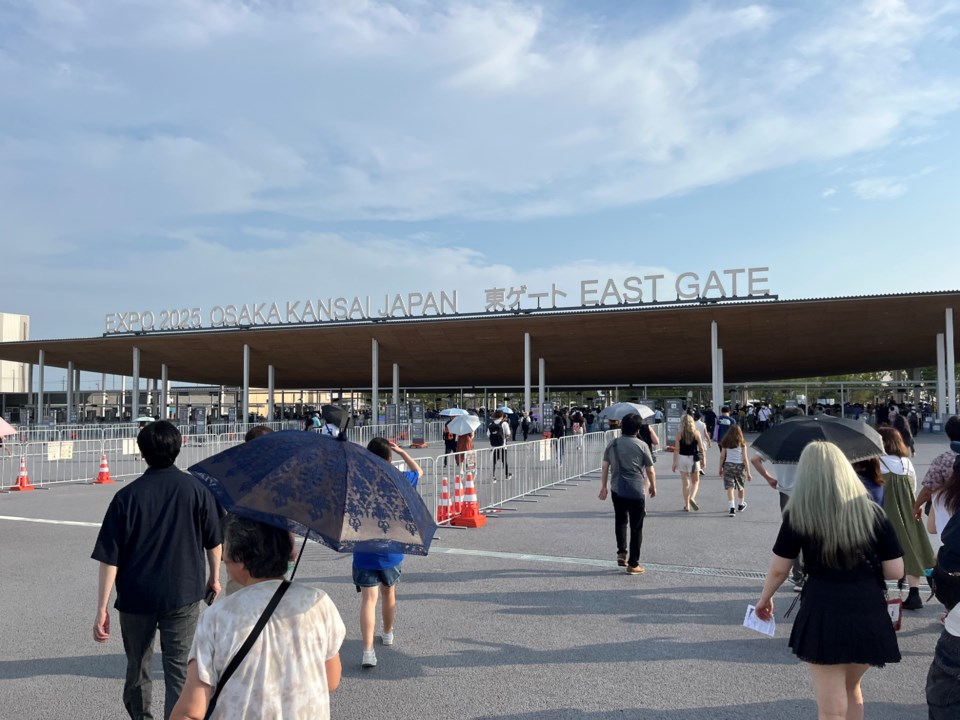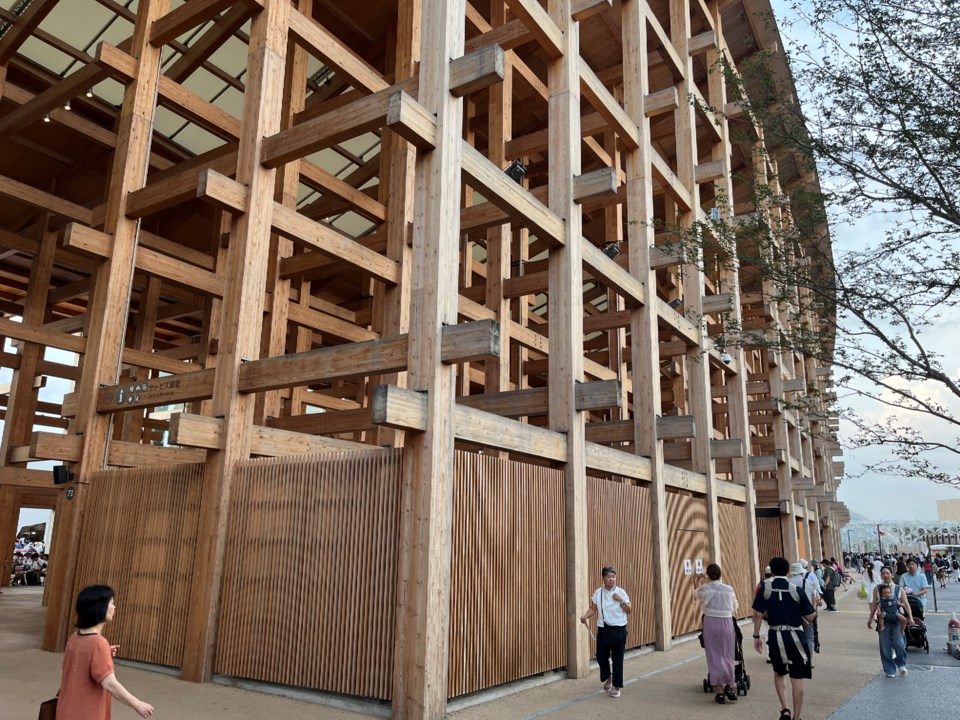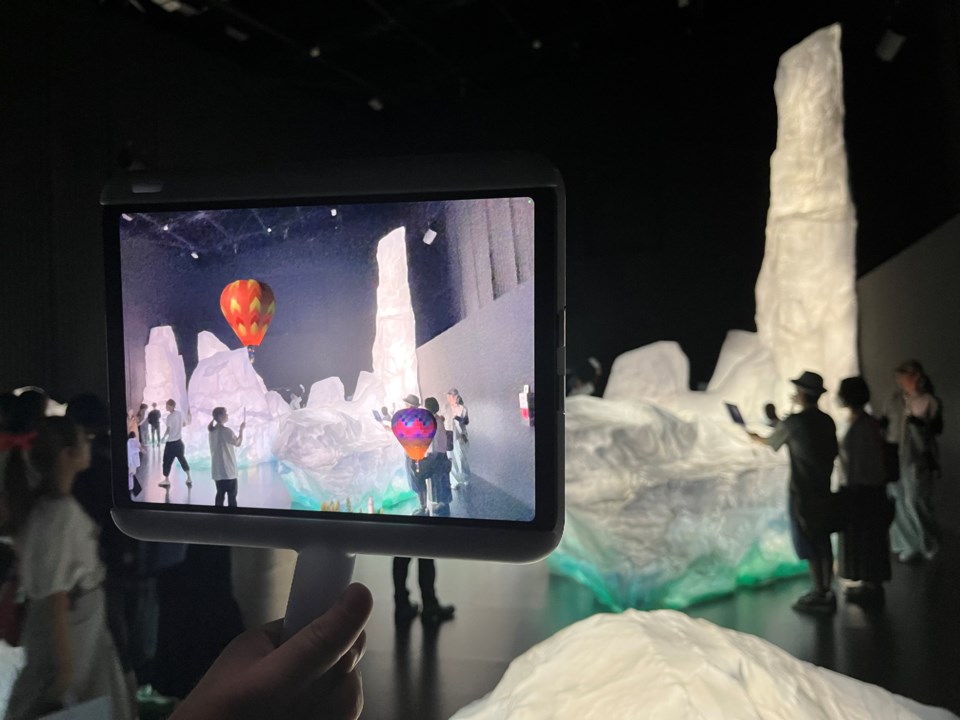World Expos may seem like relics of the past, but they’re alive and thriving; this year, it’s happening in Osaka, Japan
When I was growing up, I remember hearing countless stories from family members who attended the Montreal World Expo back in 1967. I was amazed at the concept of a “world’s fair”, but also imagined the event as a thing of the past – and certainly not an event I’d ever see for myself.
That is, until now. And having the chance to behold Canada presenting itself on the world stage so vividly stirred a national pride in myself that I haven’t felt in years.
Did you know that the tradition of a World Expo not only continues today, but is actually happening right now? Expo 2025 is currently running in Osaka, Japan; a six-month celebration of culture and new technology with pavilions from more than 150 countries around the world.
As it so happens, I was set to travel to Japan for my annual vacation this year, and coincidentally had one day to spend in Osaka as part of my tour.
With impossibly perfect timing, we decided to visit Expo 2025 – and notably, pay a visit to the colossal Canada pavilion to see for myself how our country has decided to present ourselves on the global stage.
Ever since I first learned about the event, I was ravenously curious about what it would be like for me, a Canadian, to visit Canada’s home away from home as we share our culture and heritage with the rest of the world.
So I decided to find out.

Wait – ‘World Fairs’ are still a thing?!
Yes! World expositions are arguably less publicized and featured in global media today than in their heyday through the mid-20th century, but the World Expo still takes place every five years.
This year’s event in Osaka (Japan’s third largest city) is actually hosting for the second time, having also hosted the 1970 Expo. And strangely, this was the event that chronologically followed the famous Montreal event just three years earlier!
World Expos are organized and sanctioned by the Bureau International des Expositions (BIE), which voted for Osaka to be the hosts back in 2018. Similarly to the Olympics, host cities are chosen about seven years in advance – the next event will be in Saudi Arabia in 2030.
Expo 2025 actually opened back in April, and the show is scheduled to continue until October 13 in Japan. The theme for this Expo is, according to planners, is “Designing Future Society for Our Lives”, along with three sub-themes:
Saving Lives
Empowering Lives
Connecting Lives
We visited almost exactly halfway through the event, and all major displays, activities, shows and attractions were open on site.

What’s it like going to the World Expo?
In some ways, the World Expo is somewhat like visiting the Canadian National Exposition that takes over Toronto’s Exhibition Place every August – but on a much, much larger scale.
How large exactly? The grounds for Expo 2025 are located on a man-made island just west of Osaka’s downtown core called Yumeshima Island (in the appropriately named Osaka Bay.)
Perhaps most impressive statistic is that event organizers claim that an estimated 153,000 people on average have been visiting the Expo every day since opening on April 13. The crowds are so large the city built a new subway station explicitly for the Expo.

The grounds feature dozens of standalone pavilions with museums, theatres, restaurants and exhibits sponsored by most major countries identified by the United Nations. There are also gardens, tech displays, art installations, and a gigantic water and drone show every evening in the south courtyard.
Expo 2025’s site spans a staggering 383 acres, surrounded by a gigantic, 20 metre tall “Grand Ring” made of Japanese redwood, creating a 2-mile walkway designed by Japanese architect Sou Fujimoto.
This centrepiece was recognized by Guinness World Records on opening day as the world’s largest wooden architectural structure with a certified area of 61,035.55 square metres. And in its shadow lies Pavilion P19: the Dominion of Canada.

Visiting the Canada Pavilion
Located about a 5 minute walk from the Expo’s East Gate, Canada’s pavilion is located at the show’s “Empowering Zone”, featuring displays from countries with exhibits and programs meant to educate and inspire visitors.
Upon first arrival, there are three main areas of the pavilion: there’s an interactive art gallery, a concert stage for events, and a small café selling “traditional Canadian foods” and gifts.
There were no scheduled performances on the day of our visit, but most days feature live music or speakers from Canada on a small stage with seating for about 150 people. There’s also picnic tables were snacks and treats from Canadian shops and artisans are for sale.
The real star attraction, however, is the gallery: the indoor pavilion’s main space is an augmented reality display, showcasing the diverse landscapes and people of Canada.
Visitors start by being loaned an iPad in the first room and given a brief tutorial how it works: point the iPad camera at the ordinary looking iceberg displays inside the exhibit, and the display comes to life on camera, showcasing 3D video and images of well-known landmarks.

Every province and territory is represented in the gallery, including the fields of Saskatchewan, old Quebec City, the CN Tower, Vancouver Island, Niagara Falls – the list goes on.
The gallery’s design was led by Quebecois artist and stage director Robert Lepage, known for his work in theatre, digital design and dance worldwide (and currently featured at this year’s Stratford Festival.)
Finally, the exhibit ends with a learning centre staffed by Canadians living in Japan, answering questions and sharing videos and pictures about a variety of Canadian destinations.
There’s one special display too about Prince Edward Island, promoting a new Japanese TV series about Anne of Green Gables – an extremely popular book series in Japanese elementary schools, and commonly how most students in Japan first learn about Canada.
Canada has something special to share
It’s difficult to summarize the multitude of feelings that stirred in me visiting our Expo 2025 display. On one hand, the exhibit was impressive as a unique and authentic work of art and technology that Canadians artists had to share.
But the most special part of the pavilion was the people: the cultural ambassadors and representatives working 12-hour days every day to introduce, share and host the activities and events for tens of thousands of daily visitors.

During my visit, I watched several of these ambassadors in 1-on-1 interactions with guests from around the world learning about our country and sharing their love of Canada with strangers. This was raw inspiration and global allyship at its purest form, and it was sincerely rousing to witness first hand.
I was particularly inspired, perhaps, because throughout my two week visit across several cities and towns in Japan, I was endlessly fortunate to be on the receiving end of great hospitality and welcoming. Through the hard work of the Canadian pavilion, its designers and its caretakers on the ground, it felt like we the country were collectively giving something in return.
In other words, I was proud to see my fellow Canadians championing the same care towards cultural immersion and kindness that Japan showed to me.
As a news reporter, I know too well what how global politics and world events can inspire fear and a vitriolic attitudes towards other nations. But here in Osaka, I visited dozens of pavilions where I had the chance to meet people from around the world and learn about cultures, projects and ideas I could’ve never imagined.
Maybe that’s really the whole point of a World Expo – at its most effective, visitors have a chance to meet people from other countries and bring us all closer together.
That’s certainly what’s happening at the Canada pavilion: the average wait time all day was nearly two hours for visitors lined up to see the Canadian exhibit. Don’t worry – you can make a timed reservation to avoid the line, and the wait for the live music and café are only 5-10 minutes each.
Because really, what’s more Canadian than introducing Japanese guests to poutine, maple ice cream and the music of Great Big Sea on the speakers?
Special thanks go to the host at Canada’s pavilion and the hard work they do running things in Japan, especially in the summer heat that can some days exceed 45 degrees!
One last tip: if you find yourself fortunate enough to be visiting Japan before the Expo ends this fall, make sure to bring a Canadian ID. All Canadians visiting the pavilion get to skip the long queue to see the art displays – just show your ID at the front entrance and the hosts will show you where to go.
Sadly, most of us here at home won’t have the chance to witness this great work of national pride in person. But rest assured: the hardworking Canadians representing us to the millions of Expo visitors are doing us proud.
Their warmth, knowledge and generosity were inspiring to see first-hand, upholding Canada’s stellar reputation as dignified, collaborative citizens of this world we’re so lucky to share.

Expo 2025 is currently open daily until October 13, 2025 on Yumeshima Island in Osaka, Japan. Visitor information about the exposition can be found on the event’s official English website here.
All images in this story were taken by this story’s author.


AloJapan.com